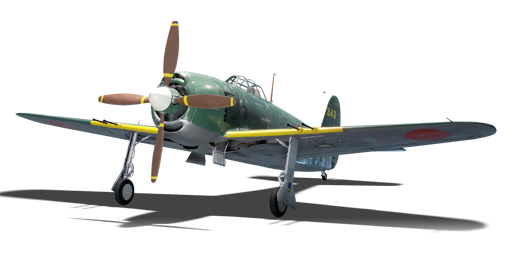



The N1K2-Ja, designated as Shiden Kai Mod. 21 Ko (紫電改二一型甲), was a minor modification of the N1K2-J. It increased the bomb load capacity, allowing for either four 60 kg bombs or two 250 kg bombs, and reduced the vertical stabilizer area by 13% by cutting the leading edge. This change improved the aircraft's balance between manoeuvrability and stability, making it an even more versatile fighter.
It has been in the game since the start of the Open Beta Test prior to Update 1.27. The Shiden Kai is a challenging aircraft to master. It has superior manoeuvrability over early jets, but they have a significant speed advantage. The only jet that can rival its agility is the Yak-15, but it suffers from low speed, climb rate, and ammunition. The N1K2-Ja can easily outperform most conventional propeller planes, but it faces difficulties against other superprops, which have better overall performance. The N1K2-Ja should rely on its mid-speed handling to gain the upper hand in dogfights. In ground battles, it can excel as a fighter-bomber employing two 250 kg bombs or Type 5 rockets next to its four 20 mm cannons which can load a solid belt of APHE which can reliably destroy soft targets and top-down medium armoured vehicles.
flaps
flaps
flaps
brake
| Belt | Belt filling | Armor penetration (mm) at a distance: | |||||
|---|---|---|---|---|---|---|---|
| 10 m | 100 m | 500 m | 1000 m | 1500 m | 2000 m | ||
| T/FI/FI/APHE | 26 | 24 | 17 | 10 | 6 | 4 | |
| HEF-T/HEF/HEF/APHE | 26 | 24 | 17 | 10 | 6 | 4 | |
| APHE/APHE/APHE/APHE/HEF/HEF-T | 26 | 24 | 17 | 10 | 6 | 4 | |
| HEF-T | 4 | 4 | 3 | 3 | 3 | 3 | |
| HEF/HEF/HEF/APHE/APHE | 26 | 24 | 17 | 10 | 6 | 4 | |












Flight performance | |
|---|---|
Survivability |
|---|
Weaponry | ||
|---|---|---|